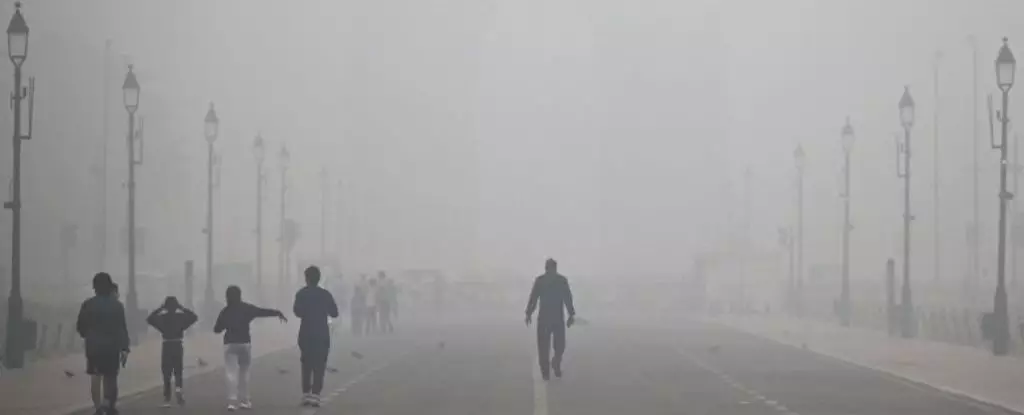Lung cancer has long been associated with smoking, yet an alarming rise in cases among non-smokers has challenged conventional understanding. Increasingly, researchers are uncovering a silent and insidious contributor: air pollution. Once dismissed as a mere irritant, ambient smog, soot, and particulate matter are now under scrutiny for their potential to cause genetic mutations linked to lung carcinogenesis. This paradigm shift not only broadens the scope of risk factors but also calls into question the safety of urban environments long considered harmless in terms of cancer risk.
The pioneering genome studies draw a stark picture: exposure to environmental pollutants leads to DNA mutations in lung tissue akin to those found in smokers. The molecular evidence reveals a troubling reality – air pollutants may act as covert mutagens, initiating genetic changes that predispose individuals to lung cancer without any exposure to tobacco. This emergent insight demands urgent attention, especially as global urbanization accelerates and air quality deteriorates in many regions.
Deciphering the Molecular Footprints of Pollution
Recent comprehensive research involving over 800 lung cancer genomes from diverse continents paints a compelling portrait of the relationship between pollution and genetic mutation. The data indicate that non-smokers residing in areas with high levels of outdoor pollution are markedly more likely to display specific mutation signatures, notably SBS4, a well-known hallmark associated with smoking-related lung cancer.
What’s particularly revealing is the correlation: the more exposure individuals have to polluted air, the higher their mutational burden. The study highlights that non-smokers living in highly polluted zones are nearly four times more likely to harbor SBS4 signatures compared to their counterparts in cleaner environments. This finding underscores that air pollution’s mutagenic potential may parallel, or even surpass, the carcinogenic effects traditionally linked to cigarette smoke.
Moreover, the presence of other mutation signatures – such as SBS40a – whose etiology remains elusive, hints at the complexity of environmental mutagens. While some signatures are well-characterized, others suggest novel pathways or unidentified pollutants contributing to the carcinogenic process. This molecular mosaic emphasizes that air pollution’s role in lung cancer is multifaceted and warrants deeper investigation.
Why Our Urban Atmospheres Are a Silent Threat
One of the most sobering aspects of this and other recent research into air pollution’s effects is the recognition that everyday exposure to polluted air might be comparable to smoking a pack of cigarettes daily – an assertion that redefines risk in urban landscapes. Despite this, most public health policies have centered on smoking cessation, vaccination, and genetic factors, often neglecting the broader environmental context.
The limitations of current studies, including reliance on regional air quality data and self-reported smoking histories, imply that individual exposure levels vary widely. Personal exposure is influenced by factors such as occupation, time spent outdoors, and indoor air quality. Consequently, the true extent of risk might be underestimated, making these findings even more alarming.
This body of evidence prompts a reevaluation of what constitutes a safe environment. Cities deemed “pollution-controlled” might still harbor unseen dangers. The intricate interaction between environmental pollutants and genetic mutations underscores an urgent need for more aggressive air quality standards and policies aimed at reducing soot and particulate matter that pose direct health threats.
The Broader Implications and Future Directions
The discovery that air pollution shares mutagenic pathways with smoking is both a wake-up call and an opportunity for proactive intervention. It challenges the misconception that lung cancer among non-smokers is a rare or unrelated phenomenon. Instead, it positions environmental health as a critical component in cancer prevention strategies.
Scientists are now tasked with uncovering the specific agents within polluted air responsible for these genetic mutations. Is it fine particulate matter, chemical toxins adsorbed onto soot, or a combination? Understanding these mechanisms could lead to targeted regulatory policies, innovative filtration technologies, and community-based intervention programs.
Furthermore, expanding genomic research across diverse populations will reveal whether certain genetic profiles render some individuals more susceptible to pollution-induced mutations. Personalizing risk assessments and preventative measures could transform public health approaches to curb this hidden threat.
As urbanization continues its relentless march, the recognition of air pollution as a significant carcinogen demands unflinching scientific scrutiny and decisive policy action. The evolving landscape of lung cancer etiology underscores a stark reality: protecting public health requires not only combating known risks but also confronting invisible, insidious environmental factors.


Leave a Reply